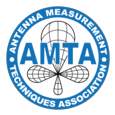
In its 45-year history, the Antenna Measurement Techniques Association has maintained an archive of the technical papers that have been published during the annual fall symposium that now amounts to a unique body of work with well in excess of three thousand individual contributions that span almost every conceivable aspect of antenna, radar reflectivity and associated measurements. During this time, the development of several very significant innovations can be seen documented from their very first inception through to their mature implementation to tackle some of the most challenging measurement scenarios. To celebrate this, AMTA is launching a new feature that aims to spotlight some of these innovations, highlighting the important papers, and to provide an overview narrative that also aims to provide some of the historical context and perspective. Authored by a leading practitioner in the field, each article will also bring the work right up to date featuring some of the more recent developments in the field. It is hoped that in this way, this new series of articles will be able to raise awareness of these important papers that some of the membership may possibly not be aware of. For those who are cognizant with the field, this should provide an interesting and very pleasant, colorful, and informative stroll down memory lane.
With this in mind, and as 2023 chair of the AMTA Growth Committee, it is my very great pleasure and privilege to present the first of these spotlight feature articles which is a remembrance of the research conducted over the period 1987–2001 at the Georgia Institute of Technology and titled Antenna Measurement Range Characterization and Compensation. The author of this first spotlight article is Professor Edward Joy (Ed Joy) who is Professor Emeritus of Electrical and Computer Engineering at Georgia Institute of Technology where he received his BEE, MSEE and PhD degrees in Electrical Engineering. Dr. Joy is a Life Fellow of the IEEE, “for contributions to the theory, techniques and applications of near-field antenna measurements” and Fellow of the Antenna Measurement Techniques Association (AMTA) “for contributions to near-field, compact and polarization measurement techniques.” He is a member of the Electromagnetics Academy. He is the recipient of the 1997 Georgia Tech Continuing Education Award, and the 1999 AMTA Distinguished Achievement Award. He has presented 364 short courses and invited seminars in the US, Canada, Europe, Middle East and Far East.
I hope you enjoy reading this article just as much as I did.
Prof. Stuart Gregson
Chair 2023 AMTA Growth Committee

